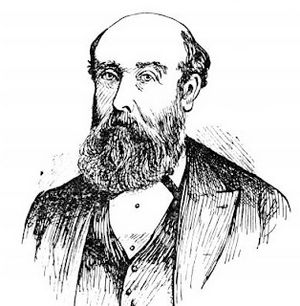James Stephens (trade unionist) facts for kids
Quick facts for kids
James Stephens
|
|
|---|---|

1889 engraving
|
|
| Born | 8 August 1821 Chepstow, Monmouthshire, Wales
|
| Died | 14 November 1889 (aged 68) |
| Occupation | Stonemason, Chartist, trade unionist |
| Known for | Involvement in eight-hour day movement |
James Stephens (born August 8, 1821 – died November 14, 1889) was a stonemason and a strong supporter of workers' rights. He was born in Wales and later moved to Australia. He became famous for helping to start the eight-hour day movement in the 1850s. This movement fought for workers to have a shorter workday.
Contents
Early Life and Work in Britain
James Stephens was born in Chepstow, Wales. Like his father, he became a stonemason, someone who works with stone. When he was young, he moved to Newport, Wales. This town was a center for a movement called Chartism.
Joining the Chartists
Chartism was a movement in Britain that wanted more rights for working people. They wanted all men to be able to vote. Stephens joined the Masons' Society in 1839. Later that year, he was badly hurt in a fall while working.
He joined the Chartist movement and took part in the Newport Rising in 1839. This event led to a riot where soldiers fired on a crowd, killing many people. Stephens was hurt but managed to escape to London.
Working as a Stonemason
Stephens found work as a stonemason at Windsor Castle. However, he lost his job when people found out he was a Chartist. He then worked on the new Houses of Parliament in London. Here, he met other people who shared his ideas.
He continued to be active in Chartism. He carried banners at rallies and knew important leaders like William Lovett. Over time, he focused more on craft unionism. This meant organizing workers in specific trades, like stonemasons. He became a key leader for masons and gained much experience as a union organizer. He married Eliza Cuthbert while living in London.
Fighting for Workers' Rights in Australia
In the 1850s, the Australian gold rush created a huge need for skilled workers. Many Chartists, including Stephens, moved to Victoria, Australia. He arrived in July 1853 and kept working as a stonemason.
Starting the Eight-Hour Day Movement
In February 1855, the Operative Masons' Society was restarted. Stephens, along with James Gilvray Galloway, helped form a local branch. This meeting is seen as the start of the eight-hour day movement in Australia.
Many employers agreed to the masons' demands for shorter hours. Stephens used strong language, like the Chartists, to push for change. He wanted to convince those who disagreed and unite all workers. A meeting of employers and workers decided that the eight-hour day should begin in April 1856.
The "Glorious 21 April"
On April 21, 1856, Stephens stopped working on the Melbourne University building. He led a large protest to Parliament House. He later wrote that it was a very hot day. He called on the men to follow him, and they immediately agreed. They dropped their tools and joined the march.
The campaign was a big success. Employers agreed that stonemasons would get the same pay for eight hours of work as they used to get for ten hours.
Celebrating the Victory
On May 12, 1856, the stonemasons and other workers marched in celebration. They went to Cremorne Gardens in what became known as the 8 Hours Procession. This date became a paid public holiday in Victoria in 1879. The procession continued every year until the early 1950s. The idea of an eight-hour workday spread from Australia and New Zealand to other parts of the world.
Later Life and Legacy
Stephens remained active in the trade union movement for some time. He served as Treasurer of the Trades Hall Committee in Melbourne from 1859 to 1861. However, he later said that other union members stopped working with him. This was because he supported sub-contracting, which the unions did not like.
As a result, his public work decreased, and Stephens was largely forgotten. Many people thought that James Gilvray Galloway, who died young, was more important in starting the eight-hour movement.
Reclaiming His Role
In 1880, Stephens wrote a pamphlet. In it, he stated that he was the true founder of the eight-hour movement in Victoria. He also played down Galloway's role. He received mixed reactions, some support and some opposition. He then started the Eight Hours Pioneers' Association with another early supporter, Ben Douglass.
By 1883, Stephens was living with his wife. He had been hurt in another fall, was weak, almost blind, and had no money. The Trades Hall organized an appeal to help him, raising over £500.
Death and Memorials
James Stephens suffered from a kidney disease and died at his home in Carlton, Melbourne, in 1889. He was 68 years old. He was buried at Melbourne General Cemetery.
Remembering James Stephens
In 1945, a book called Bluestone: The Story of James Stephens was published. It was written by journalist Clive Turnbull. Turnbull described Stephens as "the man to whom, more than any other individual, Australians owe the conditions under which they live today."
On Labour Day in 1990, a special ceremony was held at Stephens' grave. This marked the restoration of his grave. A trade union fund had been set up to repair the graves of important figures in Victoria's labor movement.

